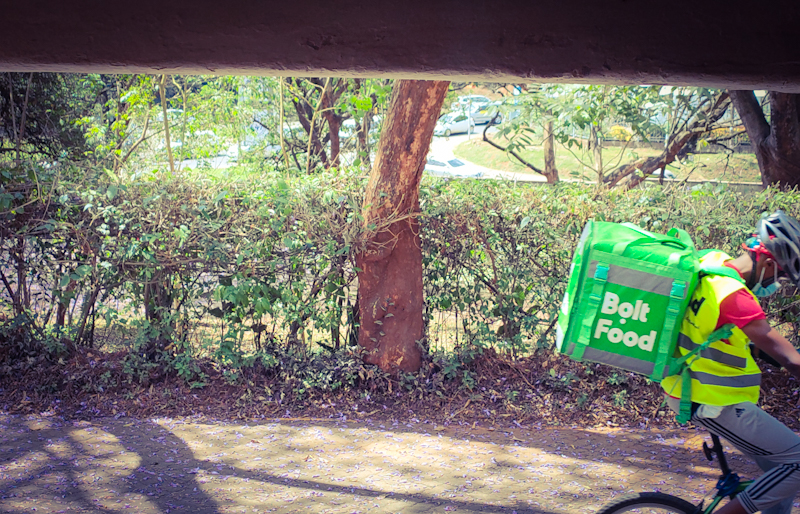Government industrialisation policies, infrastructure development and e-commerce top the list of the main drivers of growth for the industrial sector across Africa.
Knight Frank notes that increased competition for international investment has sparked a wave of new industrial policies and subsequently, a boom in the creation of special economic zones (SEZs) has ensued across Africa.
“Appetite for industrial stock across Africa remains strong, with investors attracted to the sector’s strong income profile and positive market fundamentals such as rising urbanization levels. With limited stock options, developers have had to act fast and plug this gap. Still, markets like Nigeria present developers with an opportunity, recording the highest deficit of 1,000,000 sqm,” Tilda Mwai, Senior Analyst- Africa, Knight Frank.
e-Commerce
While the penetration of e-commerce was already rising pre-Covid, online sales revenues increased by over 28% to USD 27 billion in 2020 compared to 2019 across Africa.
This uptick in online retail sales is set to continue, with e-commerce revenue expected to almost double to USD 46 million by 2025 (Statista). As a result, we expect this will bolster demand for warehouse and distribution space.
In South Africa for example, requirements for new, modern, and efficient distribution centres remain stable and demand has outperformed all other asset classes and industrial sub-segments resulting in an overall income return of 9.2% and capital growth of 0.8% over the last 12 months.
A good example of the focus on prime warehousing space has been Takealot’s recent leasing of approximately 11,000 sqm of space in Montague Park in Montague Gardens. In addition, global e-commerce giants are also fuelling this flight to quality trend.
This has been evidenced by Amazon’s inauguration of the largest logistics centre in Africa against the backdrop of their formal entry into Egypt.

Infrastructure Developments
The fast-paced development of major industrial corridors (see map below) in recent years has played a significant role in transforming the warehousing and logistics sector which has long been held back by poor infrastructure.
According to the 2018 Logistics Performance Index (LPI) — a World Bank survey of operators providing feedback on the logistics ‘friendliness’ of countries, logistics infrastructure across Sub-Sahara Africa scored 2.20 out of 5, highlighting the need for increased investment in the sector.
This compares to a score of 4.37 in Germany- the highest-ranked nation in the LPI.
At present, we estimate that there are over USD 400 billion worth of rail and road developments taking place across the continent.
These developments are set to drive increased intra-Africa trading.
In Eastern Africa, for example, increased infrastructure development along the northern corridor that links Kenya to Uganda and the Democratic Republic of Congo (DRC) has resulted in over 150,000 sqm of prime warehousing being developed in Nairobi alone in less than six years; almost 90% of all the stock delivered in this period.
Furthermore, due to improvements along the north-south corridor that links South Africa to other Southern African countries, anecdotal evidence shows 3PLs in Johannesburg are relocating to the eastern and northeastern parts of the city, attracted by the superior and extensive road network infrastructure.
In addition, infrastructure development along the West Africa Growth Ring that links countries such as Ghana, Côte d’Ivoire and Burkina Faso is set to unleash in excess of 1 million sqm of purpose-built prime warehousing according to our estimates.
We forecast that cities such as Lagos, Accra and Abidjan are likely to be prime beneficiaries.
At a more macro level, alongside increased infrastructure developments, the implementation of the African Free Trade Agreement will also be a key lynchpin for the growth of the prime industrial sector.
Across Africa, most governments have ramped up initiatives on manufacturing and industrialisation as part of measures to boost economic activity in the wake of the pandemic.
Increased competition for international investment has sparked a wave of new industrial policies and subsequently, a boom in the creation of special economic zones (SEZs) has ensued across Africa.
The UN Centre for Trade and Development (UNCTAD) estimates that there are currently over 180 SEZs in Africa, with a further 51 SEZs under development. Kenya (61) has the highest concentration of SEZs, followed by Nigeria (38) and Ethiopia (18).
Governments Setting The Stage For Growth
In addition, several governments are facilitating the development of industrial parks within these zones to drive foreign direct investment. In Ethiopia, for example, the establishment of the Ethiopian Industrial Parks Development Corporation has aided the delivery of over 15 million sqm of warehousing in just six years.
This initiative has been instrumental in generating over USD 735 million in government revenue and creating over 80,000 jobs.
Furthermore, Uganda’s government has ramped up its industrialisation efforts by unveiling plans to expand the Kampala Industrial and Business Park (KIBP).
The 4 million sqm park expansion will take the total number of companies at KIBP to 500 with a total investment capacity of USD 3.5 trillion.
Once fully completed and occupied, KIBP is expected to increase the total number of people employed on the estate to 200,000 and generate USD 540 million in taxes per annum.
Source: Africa Logistics & Industrial Review A biannual review of the main industrial markets in Africa H2 2021 www.knightfrank.com





2 Comments
Pingback: Grit Real Estate Secures USD 31.5 Mn to Acquire Orbit Products Africa Ltd
Pingback: Logistics: MSC Group to Acquire Bolloré Africa, for $6.4m